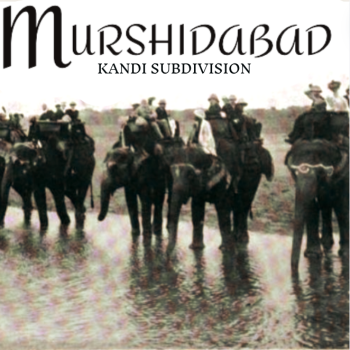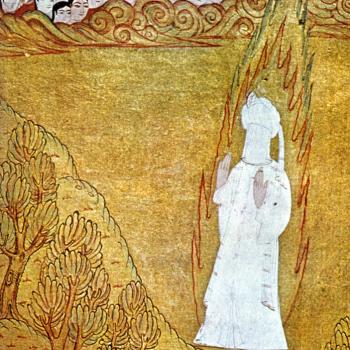
Patience has been on my mind a lot recently, perhaps because I realise it’s a virtue I need to cultivate. I often notice how I become impatient when I am thwarted, or even just momentarily distracted, in the midst of some task I feel is important. It goes hand-hand with a tunnel vision in which I am less present and open to what is being offered in the moment.
The Oxford English Dictionary defines patience as: “The capacity to accept or tolerate delay, problems, or suffering without becoming annoyed or anxious.” That’s a start, but what can our sacred texts teach us? The Quran constantly stresses the importance of patience. God is with those who patiently persevere [2:153], it tells us, and repeatedly in the Quran we get the sense that we are never closer to God than when we practice it. So endure with patience, always remembering that your patience is from God … for truly God is with those who are conscious of Him/Her and are doers of the good [16:127-28].i So patience is a Divine Quality sourced in God’s own patience, and the trials of life that require this virtue are opportunities to become more conscious and awake.
Rumi, too, has some interesting observations about patience which might help us reframe it. He counsels us:
To practice patience is the soul of praise:
have patience,
for that is true glorification.
No glorification is worth as much.
Have patience:
patience is the remedy for pain.[Mathnawi II, 3146]ii
The idea that patience is the ultimate form of glorification is intriguing. True patience is not simply a passive waiting, but an acknowledgement of the Real – of God. And then there is that line “patience is the remedy for pain.” It would be easy to glide over this line without paying it much attention, but actually it’s saying something quite remarkable: that patience is not something we need until the remedy for our pain arrives – patience is the remedy itself.
In Islam we speak of the 99 Names of Allah. The very last Name in the traditional lists is as-Sabur, “the Patient”, and this seems significant. Perhaps it is in recognition that patience is the most difficult Divine Quality to fully embrace and emulate. “Patience is a virtue,” we say, yet the fact that we need to be reminded tells us it’s one which is often overlooked. Other virtues, such as compassion or generosity, are more demonstrative, give us more of a chance to shine. Whilst other virtues give us a sense of control or achievement, patience is the virtue that lets us know that we are not in control, that things do not happen as and when we wish. Spider-like, it leaves us dangling in the vast web of the world, and invites us to be content with a sticky predicament. Is it any wonder that we wish to avoid it or downplay its significance?
The Quran asks us to see signs of God’s Qualities in the book of nature, and it’s worth contemplating the spider a little further in order to get a better perspective on patience. Web-weaving spiders patiently wait for their prey to come to them – they are receptive in a deadly way. Females are generally the most prolific web-weavers, and are also more deadly than the male. Interesting to note, too, that like patience itself, spiders are often something we would prefer to overlook. Too many eyes, too many legs with too many hairs on them – they are disturbingly sensitive and aware.
If we look at Western myth we often find that a woman weaving is used as a symbol of patience. One of the most famous examples is in Homer’s Odyssey. Odysseus spends 10 years in an exhausting war against the Trojans, and then another 10 years trying to return home to Ithaca and his beloved wife Penelope. He is blown across the seas from one peril to another, and he has to use all his resourcefulness, courage, and patience before he finally makes it home. But his experience is just one half of the story. The other half, which we tend to overlook, is the experience of his wife, Penelope.
She, too, exhibits resourcefulness and courage, and her patience is of an even higher order. She spends the 20 years of her husband’s absence patiently waiting at home, fending off the advances of a group of boorish suitors, who insist that Odysseus is dead and that she must marry one of them. One of the ploys she adopts to delay them is to claim she will consider marrying one of them once she has finished weaving a death shawl for Odysseus’ father. This drives the suitors mad with impatience, especially once they find out she has been unpicking the shawl every night!
On one level, Homer seems to be offering us models of the ideal man in Odysseus and the ideal woman in Penelope. However, for some of the ancient Greeks, the Odyssey was an esoteric parable designed to initiate adepts into the spiritual mysteries. Odysseus and Penelope can be understood as different aspects of ourselves, regardless of whether we are male or female. Perhaps Odysseus represents that part of us which needs to be actively engaged in the outer world with all its vicissitudes and distractions – the doing part of us. Penelope, on the other hand, represents that part of us which needs to remain at home with God in the intimate chamber of the heart, detached from all the distractions of the outer world – the being part of us. Sufism teaches that these two parts of us can exist simultaneously and should ideally be in holistic balance.
That the being part of us is presented as patiently weaving is significant, because through being we start to merge into the Creator who is weaving the tapestry of existence itself. The great mystics tell us this happens by the grace of God, but perhaps we first need the patience to abide in that inner sanctum of the heart where God dwells.
Tennyson wrote a haunting ballad called “The Lady of Shalott” which seems to me to be a play on the story of Penelope and Odysseus. In his poem, a woman is patiently weaving. But no hero is seeking her – she has been forgotten and none of the Knights of the Round Table are even aware of her existence. Tragically, she finds she cannot patiently abide alone in her tower any longer. Quitting her weaving, she goes out into the world only to die from a curse that falls upon her as soon as she leaves her post. She, too, can be seen as that being aspect of ourselves that can only exist in the eternal realm of the heart. On some level, Tennyson recognised that the increasingly materialistic age in which he lived had forgotten this essential aspect of the human soul – with tragic results of which it was only dimly aware.
Whilst she is still weaving, Tennyson describes how the Lady of Shalott watches the view from her window reflected in a mirror, rather than directly from the window itself. When she abandons her post, this mirror cracks. This has always puzzled readers and critics – what could the mirror signify? For Rumi the mirror is a symbol of the heart. The Lady of Shalott has been gazing into her own heart, and when she loses patience and abandons her post, her heart breaks.
Some verses from Rumi can shed a little more light on patience and its connection to the heart-mirror:
Patience is the key to success.
The remedy of patience will burn away the veils over your eye
and open your heart.
When the mirror of your heart becomes clear and pure,
you will behold sights beyond this world of water and earth.
You will behold both the image and the Image-Maker,
both the carpet of the spiritual dominion
and the One Who Spreads It.[Mathnawi II:70-74]iii
So much of the matrix ofthe modern world, and so much of our own ego’s impatient activity, is intent on making us forget this mirror of the heart. However, God is with those who patiently persevere seems to me to be a rope to which we can cling with all our might. And as for the story of how Muhammad and Abu Bakr were hidden from their pursuers by a spider’s web – what rich symbolism might we draw from there?
[i] Both translations by Camille Helminski in Ninety-Nine Names of the Beloved
[ii] Translated by Kabir and Camille Helminski in Jewels of Remembrance
[iii] Translated by Camille Helminski in in Ninety-Nine Names of the Beloved
















